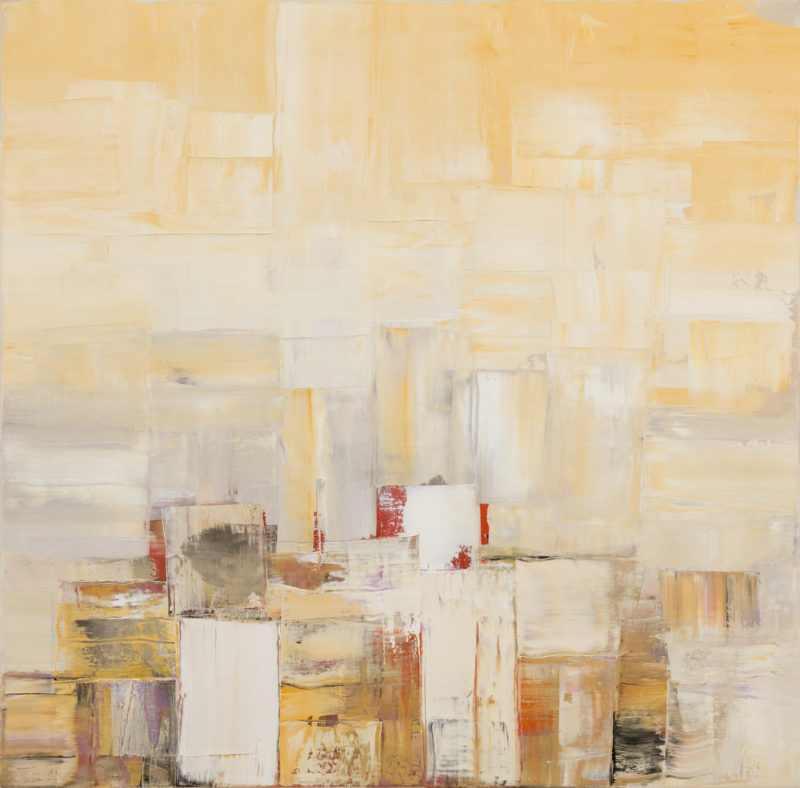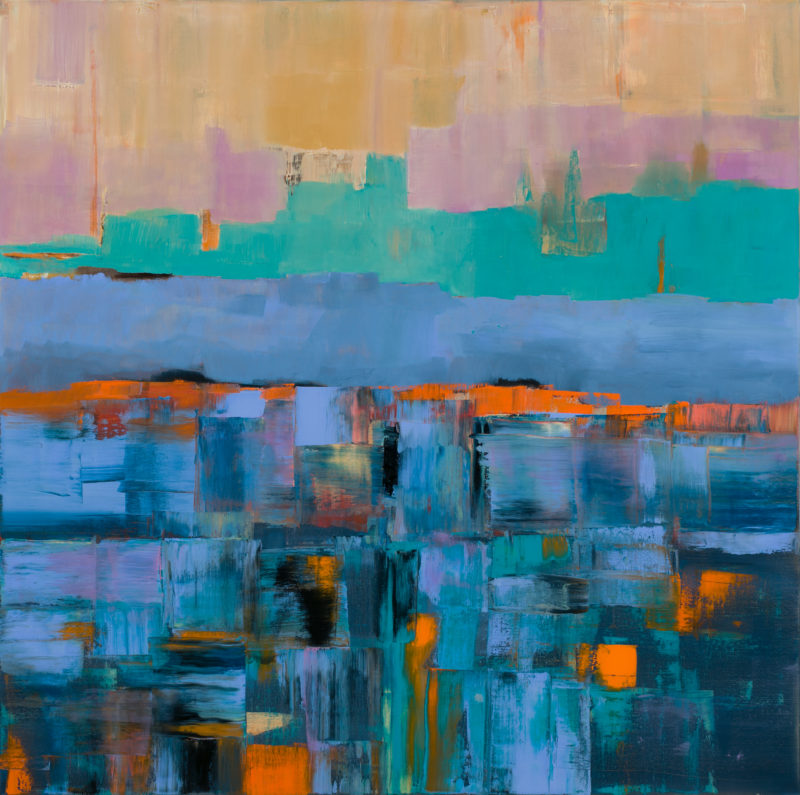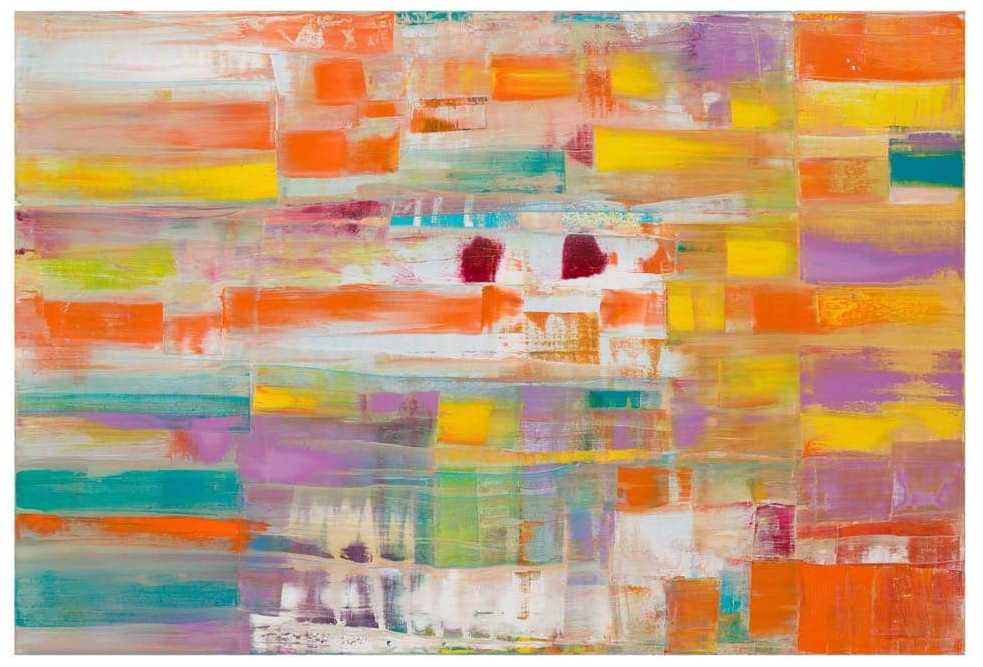Elaine Asarch has worked as an interior designer for more than thirty years. At the same time, she has been drawing and painting all her life. With interests ranging from anthropology to public spaces, Elaine Asarch creates large-scale abstract paintings in which she reflects on the world and the times in which we live. Fine Art Shippers spoke with the artist about the underlying philosophy and evolution of her work, her influences, and her recent experience with our company.
Artist Talk: Elaine Asarch on Soul and Mind Landscapes
What kind of emotions are most important to you as an artist and as a human being?
Elaine Asarch: I try to convey what is currently happening in our world and within us. These emotions depend on the time in which I paint. They are personal and subjective, of course, but I want them to have universal appeal so that viewers can identify with them. Overall, my work is rooted in the energy of nature expressed in landscapes of the imagination. In these landscapes, you will find existential fears and joy of life, despair and hope, light and darkness. All this is constantly evolving and changing both form and substance. For me, painting is a way to find an unsteady balance between these extremes, between all the different parts of our lives and combine them into a whole. In the last two years, many of us have gone through hard times caused by isolation, concern for our loved ones, and insecurities. But I believe this has made us look differently at what we have and realize the value of simple but meaningful things.
You have a background as an interior designer. How does that influence your art?
Interior design has certainly helped me as an artist. As designers, we create and shape spaces and landscapes. We work with colors, orientation, rhythm, balance, and harmony. I try to translate that into my art. I think as artists, we approach life very similarly. We are influenced by colors, sounds, and smells – everything we can perceive with our senses. I turned to abstract painting because I felt I was less inhibited by the representation of a particular object. For me, it was a better way to express what came from within. I was fortunate to study with several great artists who have inspired me. Among my mentors were well-known Colorado artists Dale Chipman, Jeffrey Keith, and Jordan Wolfson. I also spent some time in the studio of Ricardo Mazal, a contemporary artist from Mexico City and Santa Fe, New Mexico.

By the way, do you think formal education is necessary to be an artist?
I think everyone can be an artist if they are interested. It just depends on what you want to achieve professionally. There's a wonderful quote by Pablo Picasso that says all children are artists. That is so true. Children are not inhibited by formal training or judgments that something is good or bad. Those who manage to keep that inner fire alive remain artists throughout their lives. We can all live creative lives and be artists in whatever field we choose.
Now let's talk about your latest project "Punctuated Equilibrium." What is it about?
I also studied anthropology, and this exhibition refers to the term "punctuated equilibrium," which was coined in 1972 by paleontologists Stephen Jay Gould and Niles Eldredge. According to their theory, organisms often remain stable for millions of years with little change. This sluggish rhythm is sometimes interrupted by a burst of rapid change that culminates in the emergence of new species. This “Punctuation” can be caused by volcanic or seismic activity, disease, wars, and other things that affect the outside world. With the covid-19 pandemic, we experienced such a punctuated period in which the usual order of things was disrupted. My project is an attempt to answer the questions we have been asking ourselves for more than two years now. What do these changes entail? How do they affect the way we think, work and communicate? I find this very interesting.
As an artist, you need to transport your artwork to exhibitions, galleries, and private buyers. What is the key to safe art transportation?
It is important that the artwork is properly packed and arrives safely and without damage.
What has been your experience with Fine Art Shippers?
We rented a van to move the artwork from Denver to Santa Fe, New Mexico. You can imagine how much work that was. Since the show continued for two weeks after we left, we had to find a company to bring the works back. My next exhibition was scheduled to open in Denver, Colorado on June 3, and I needed the paintings back no later than the day before. I talked to the movers, who said they could pick them up at the end of May but were not sure if they could get them to the exhibition in time. Ilya, one of the company owners, drove a truck back in a rainstorm so that I could get the work not just a day but a week before. I appreciated that very much.

In what spaces would you like to see your art? How would you like it to be installed and displayed?
I would love to hang my works in a museum-like setting. Many of my paintings are large, four by four, so lots of space and good lighting are very important. I am very particular about how the work should be displayed, because I want them to be at eye level. And I appreciate having a curator for the exhibitions, because it's always good to have another experienced voice from the art world to make sure my ideas are correct.
What would you recommend to a buyer of your works when it comes to how they should be installed in the home?
I think, first of all, that the painting should have a certain height. And it's good if it hangs on a wall that does not conflict with the painting, so that no design elements distract attention from the painting.
In conclusion – what new projects are you working on right now?
With the last two big shows I have just done, I have noticed that a lot of people are looking for smaller artwork. So I will be painting some smaller canvases. But they'll probably be similar to the works I just created, because I am still in that "punctuated equilibrium" mode.
Photo courtesy of Elaine Asarch Featured image: Elaine Asarch. A Walk Among the Lines
